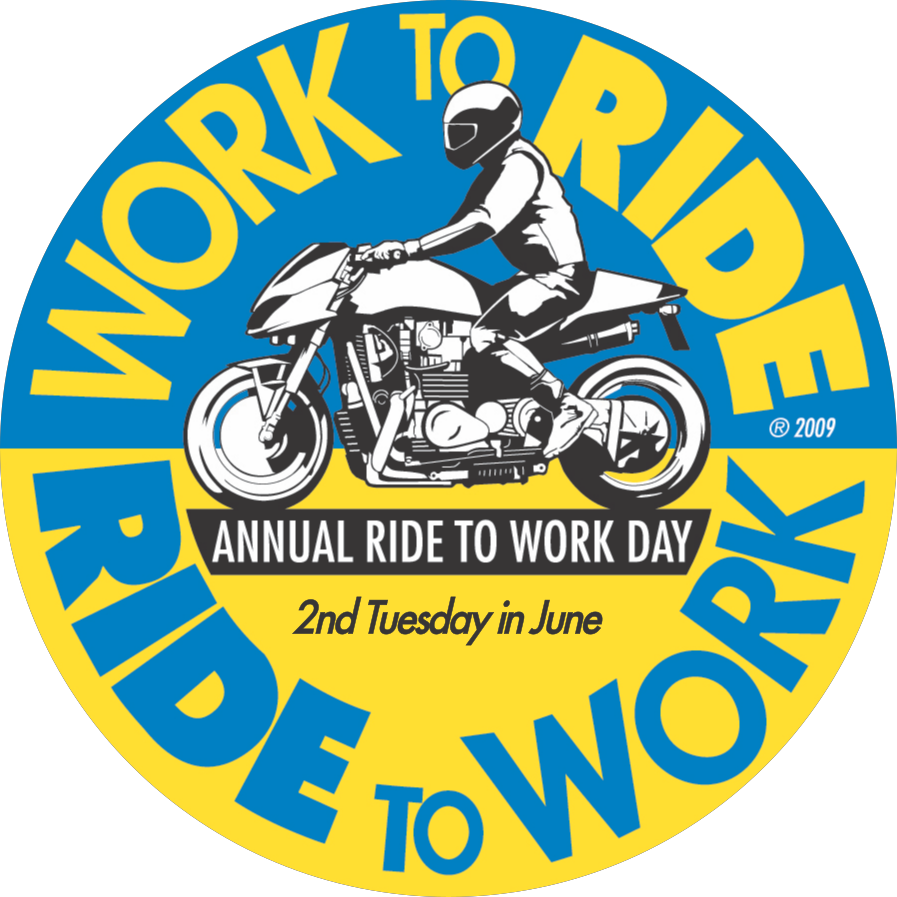All Rights Reserved © 2006 James Hesketh
“Get your motor runnin’
Head out on the highway
Lookin’ for adventure
And whatever comes our way
Yeah Darlin’ go make it happen
Take the world in a love embrace
Fire all of your guns at once
And explode into . . . “
The Office?
A lot has changed in the four decades since Steppenwolf’s hard rocking ode to rebellion and the open road became the motorcyclist’s anthem. The generation that was Born to be Wild has settled down, bought homes, raised families, become affluent and traded a freewheeling lifestyle for a workaday reality that usually begins and ends with a solo rush-hour commute in the family vehicle.
On Wednesday, July 19, motorcycle and scooter riders are being asked to rekindle that youthful abandon, awaken a bit of idealism and just plain have some fun by joining their brethren (and sister-en) on the 15th annual Ride to Work Day.
The purpose of Ride To Work Day is to educate government officials, employers and non-riders about the advantages of motorcycle commuting. Riding to work on this day shows the positive value of motorcycles and scooters for transportation, says Andy Goldfine, Ride to Work Day founder and owner of Aerostitch Riderwear, a motorcycle clothing manufacturer. For many people riding is an economical, efficient and socially responsible form of mobility that saves energy, helps the environment and provides a broad range of other benefits, he adds.
Consider this: According to U.S. census figures, 80-million commuters take their cars or light trucks out onto America’s roads each day, and most of those vehicles only transport a single person. The average American spends just a bit less than an hour each day to commute only 29 miles. According to US Dept of Transportation statistics, the average passenger vehicle gets 21.51 mpg, while small trucks and SUVs get 17.22 mpg.
Now look at motorcycles: With an average fuel consumption of 35 to 50 mpg for motorcycles and up to 100 mpg for scooters, two-wheeled transportation could cut commuting costs in half, and with a size that allows three to five bikes to park in the same space as a single automobile, road congestion could be reduced by a huge amount. A recent British study found that in urban commuting situations, motorcyclists, because of a bike’s smaller size and added nimbleness, shortened travel time by 33 minutes per hour traveled. Outside of cities, in less crowded areas, that reduction in commuting time was 20 minutes per hour.
In order to expand a single Ride To Work Day into a nation of moto-commuters, government and transportation officials will need to encourage riders to leave their cars at home. Many cities have begun this process by offering free parking for bikes. Another incentive is to waive tolls for motorcycles during peak travel hours. California even allows motorcyclists to split lanes and filter their way through gridlocked by riding between lanes of stopped or slow moving traffic — a practice common in Europe where, because of high fuel prices, narrow roads and crowded cities, motorcycles and scooters have always been used for regular transportation.
Businesses and employers could offer convenient storage space for helmets and bulky, protective riding gear – maybe a changing area to climb out of a set of leathers and slip into that Armani suit.
Perhaps, the biggest argument against daily commuting from a rider’s perspective, especially in urban areas, is the safety issue. Riding is more dangerous than driving, and many riders stay off busy roads as a survival tactic. But, as motorcycles join autos on a regular basis, drivers will become more aware of bikes and will learn to look out for them. This isn’t something that will come about from a single annual event, but hopefully the publicity of Ride to Work Day will help make drivers aware of riders and help transform the image of bikes from recreational toys to a viable form of transportation.
Another problem is that many non-riders just plain don’t like motorcyclists, they still hold onto that old stereotype of Hell’s Angels type bikers. Or the only riders they notice are the occasional sportbikers cutting through traffic at breakneck speeds. These riders are the minority and those stereotypes will shatter when responsible riders are welcomed to come out of the closet and join the everyday commute.
It is not practical to think that everyone could switch to moto-commuting, but think what changes — to everyone’s benefit — a five percent increase of motorcycle commuting (along with a corresponding five percent decrease in automobile traffic) could bring — freer flowing traffic, less pollution, fuel savings, easier parking for everyone and shortened travel times for riders.
Work to Ride; Ride to Work. Got a nice ring to it, doesn’t it?
James Hesketh
[email protected]
Coconut Grove, FL

